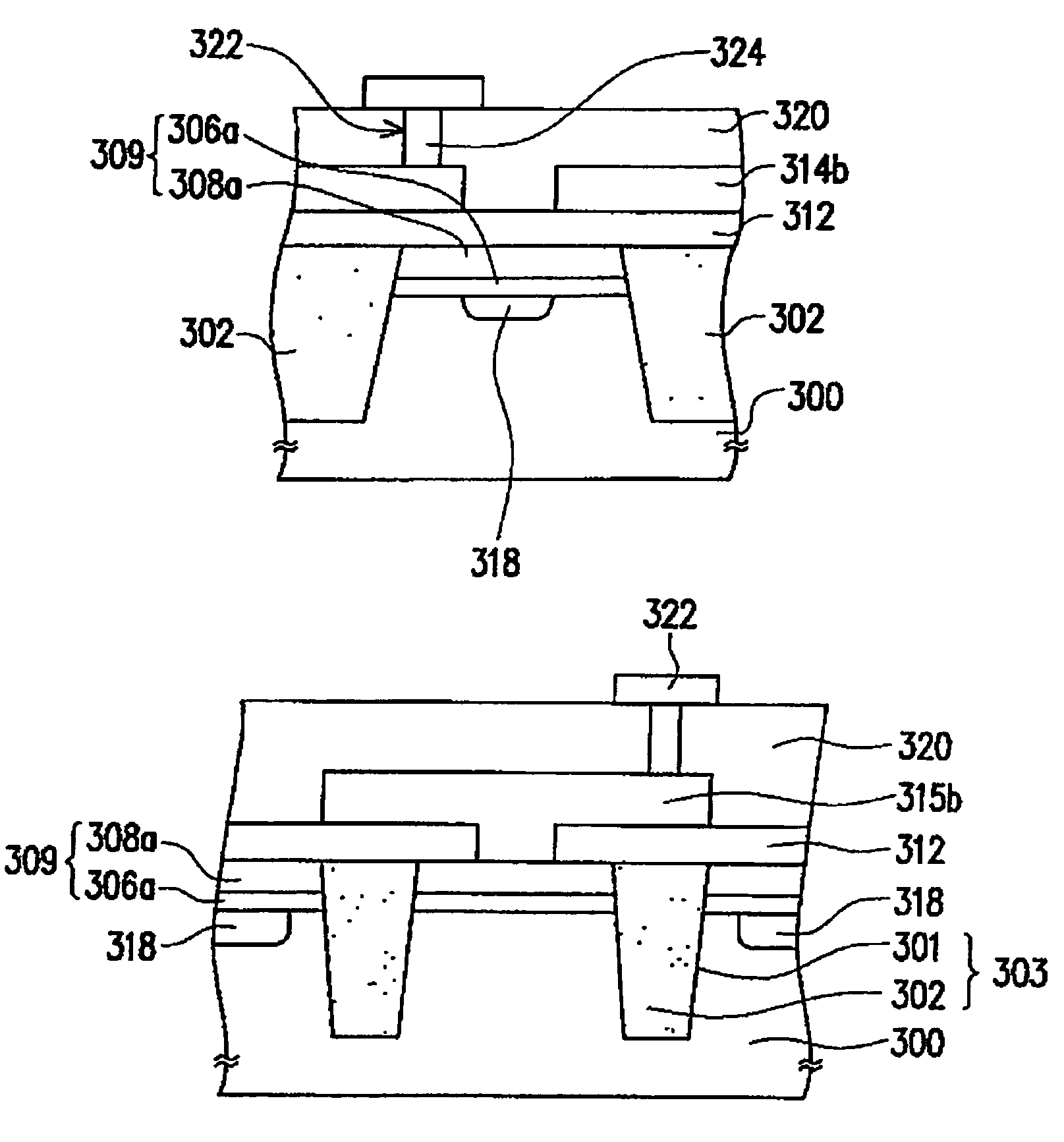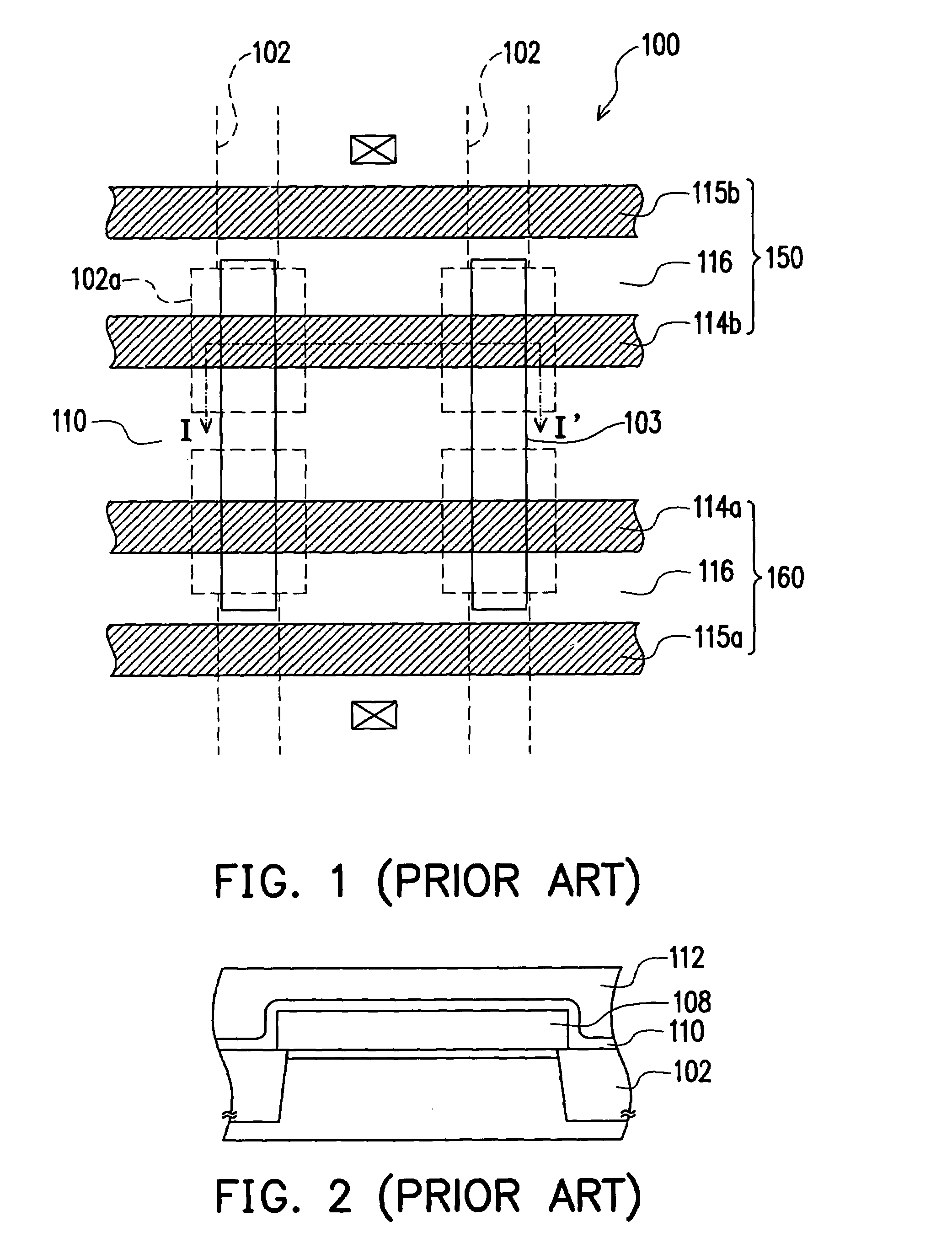Method for fabricating memory device
a memory device and memory technology, applied in the field of semiconductor devices, can solve problems such as reliability problems, horizontal two bits, and openings b>103/b> may shift to undesirable positions, and achieve the effects of reducing the distance between memory cells, avoiding misalignment problems, and increasing the reliability of memory devices
- Summary
- Abstract
- Description
- Claims
- Application Information
AI Technical Summary
Benefits of technology
Problems solved by technology
Method used
Image
Examples
Embodiment Construction
[0021]FIGS. 3A–3D are top views illustrating the process steps for forming a memory structure according to one preferred embodiment of the present invention. FIGS. 4A–4I are cross-sectional views illustrating the process steps for forming the memory structure of FIGS. 3A–3D along the line I–I′, according to one preferred embodiment of the present invention. FIGS. 5A–5K are cross-sectional views illustrating the process steps for forming the memory structure of FIGS. 3A–3D along the line II–II′, according to one preferred embodiment of the present invention.
[0022]Referring to FIGS. 3A, 4A and 5A, a first dielectric layer 306 is formed on the semiconductor substrate 300. The material of the first dielectric layer 306 can be silicon oxide formed by thermal oxidation, for example. A first conductive layer 308 is formed on the first dielectric layer 306 and over the substrate 300. The first conductive layer 308 can be formed by depositing a conductive material layer, for example, a polys...
PUM
 Login to View More
Login to View More Abstract
Description
Claims
Application Information
 Login to View More
Login to View More - R&D
- Intellectual Property
- Life Sciences
- Materials
- Tech Scout
- Unparalleled Data Quality
- Higher Quality Content
- 60% Fewer Hallucinations
Browse by: Latest US Patents, China's latest patents, Technical Efficacy Thesaurus, Application Domain, Technology Topic, Popular Technical Reports.
© 2025 PatSnap. All rights reserved.Legal|Privacy policy|Modern Slavery Act Transparency Statement|Sitemap|About US| Contact US: help@patsnap.com



